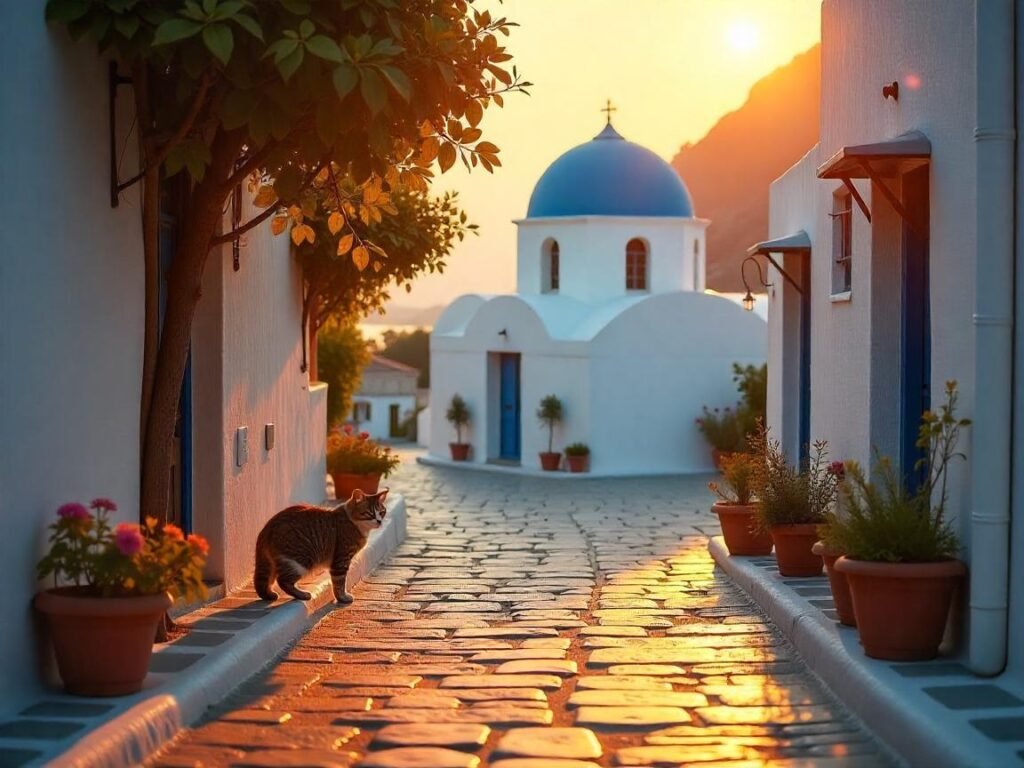
Wednesday, June 18, 2025
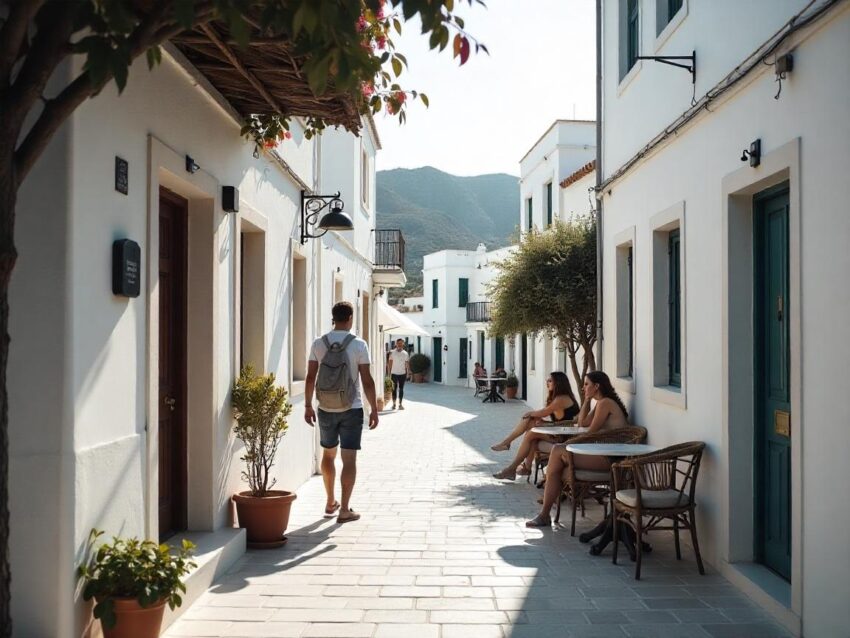
Tinos, Nisyros, Karpathos, Syros, and Meteora in Greece are suddenly topping the hit list for tourists from the US, Canada, Argentina, Mexico, Brazil, Chile, and Costa Rica—but why now? As Barcelona, Venice, Lisbon, and Mallorca are buried in pain from overtourism and surging anti-tourism protests, a silent shift is happening. Travelers are turning their backs on overcrowded classics and chasing peace in new destinations.
Meanwhile, headlines scream chaos in Venice and Barcelona, yet Tinos and Meteora quietly rise in demand. Karpathos, Syros, and Nisyros are no longer secrets—they’re the antidotes. The wave from Canada and Mexico is growing. So is the influx from Brazil, Argentina, Chile, and even the US.
But what’s pulling these travelers away from cities now buried in backlash? Why are these Greek destinations exploding in popularity? The answers reveal a deeper transformation in global tourism. And the new map of wanderlust begins here.
Greece’s tourism boom is rewriting the global travel narrative in 2025. A record-breaking 40.7 million travelers poured into the country this year, driven by a wave of visa-free access from countries like the United States, Canada, Argentina, Brazil, Chile, Mexico, and Costa Rica. With crowd-free destinations gaining momentum and new regulations on the horizon, the travel industry is watching closely.
The big headline: visa-free travelers are coming in fast, and Greece is evolving just as quickly to meet the demand. The country is not only reclaiming its spot among Europe’s most desirable getaways—it’s also rewriting what a modern tourism strategy looks like.
Visa-Free Travel Sparks Tourism Surge
Citizens from over 60 countries can currently visit Greece visa-free for up to 90 days within a 180-day window. That includes major markets like the US, Canada, Australia, New Zealand, Japan, and much of Latin America. This freedom of entry has unlocked a massive increase in short-haul, culture-driven tourism.
In 2024 alone, 40.7 million people visited Greece—a 12.8 percent jump over 2023. The majority of visitors entered via air, though land-border traffic has also risen significantly. Land arrivals from neighboring countries like Bulgaria, Romania, and Serbia contributed over 11.4 million entries. Combined, these flows reflect a massive spike in accessibility.
The surge is about more than numbers. It’s a reflection of pent-up demand meeting strategic national policy. Greece has positioned itself as an easy, desirable, and experience-rich destination for both first-time and returning visitors.
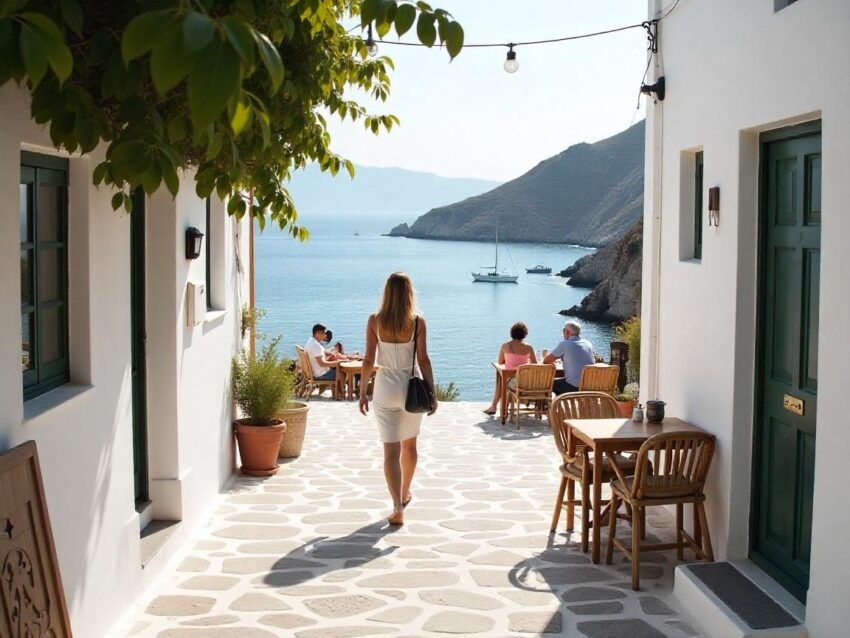
Tourist Spending Hits Historic Highs
With more people comes more spending. Tourism receipts reached €21.59 billion in 2024, generating an €18.79 billion surplus for the Greek economy. Travelers from Germany, Italy, and the United States contributed most to this revenue surge.
Interestingly, while visitor numbers from France and the UK remained strong, their spending dropped slightly—indicating a subtle shift in how and where tourists are investing their travel budgets. EU travelers continue to account for 55 percent of total tourism receipts, but the spotlight is now shifting toward North American and Latin American markets.
Hidden Gems Rise as Tourists Seek Escape from Crowds
As iconic destinations like Santorini and Mykonos experience capacity strain, lesser-known regions are becoming the new hotspots. Underrated islands and inland areas are attracting a growing number of visitors seeking quieter, more immersive experiences.
Tinos (Cyclades)
Tinos is a soulful Cycladic island known for its deep-rooted spirituality, traditional architecture, and untouched beauty. Often bypassed for its glitzy neighbor Mykonos, Tinos offers a slower pace with rewarding experiences. The island is famed for the Church of Panagia Evangelistria, a major pilgrimage site with its icon said to perform miracles. Beyond the spiritual draw, visitors can explore over 40 marble-sculpted villages like Pyrgos and Volax, each preserving unique artisan and folkloric traditions. Tinos’ beaches—such as Kolymbithra and Agios Sostis—offer tranquility without the crowd. Hikers can enjoy ancient footpaths that weave through terraced hillsides and dovecote-dotted valleys. Local tavernas serve dishes rooted in Cycladic heritage, and the wine scene is quietly flourishing. Art lovers will appreciate the island’s contemporary sculpture scene and museums. With its blend of natural serenity, cultural depth, and sacred history, Tinos feels timeless and untouched.
Nisyros (Dodecanese)
Nisyros is a volcanic island in the Dodecanese chain that feels like stepping into another dimension. What sets Nisyros apart is its still-active volcano, whose massive caldera dominates the island’s interior. Visitors can actually walk inside the crater of Stefanos, where the earth hisses and bubbles beneath their feet—a surreal, otherworldly experience. The main town, Mandraki, is postcard-perfect with its medieval castle, blue-shuttered homes, and peaceful harbor. Thermal springs in Loutra offer natural relaxation, while the small villages of Nikia and Emporios sit perched on mountain ledges with panoramic views and charming tavernas. The island’s untouched beaches, like Pachia Ammos and Lies, are perfect for solitude seekers. Nisyros is also rich in folklore, archaeological sites, and religious festivals that bring the local community together. With minimal tourist infrastructure, it offers an authentic Greek island escape—quiet, curious, and completely captivating.
Karpathos (Dodecanese)
Karpathos is a rugged, mountainous island nestled between Crete and Rhodes. It has retained a strong cultural identity, especially in its northern village of Olympos, where locals still wear traditional dress and speak a unique dialect. The island is a paradise for outdoor lovers, offering excellent hiking trails, windsurfing spots, and secluded coves. Apella Beach, often ranked among Greece’s best, dazzles with turquoise waters framed by cliffs. The town of Pigadia provides a vibrant yet relaxed base with waterfront tavernas and archaeological sites like the ancient city of Potideon. The island’s terrain is ideal for trekking, especially the routes connecting Olympos with Diafani. Karpathos also celebrates numerous religious festivals throughout the year, allowing visitors to experience authentic island traditions. Quiet, genuine, and dramatic in scenery, Karpathos is where the Dodecanese’s soul remains intact.
Syros (Cyclades)
Unlike the whitewashed minimalism of most Cycladic islands, Syros surprises with its neoclassical grandeur and multicultural heritage. Ermoupoli, the capital of both the island and the Cyclades region, stuns with marble-paved streets, 19th-century mansions, and the majestic Apollo Theater—a miniature version of La Scala. The town is a cultural hub, with music festivals, art galleries, and museums like the Industrial Museum and the Archaeological Museum of Syros. On the hill of Ano Syros, narrow alleyways wind around Catholic churches and traditional cafes offering panoramic views. Syros has a laid-back beach scene, with family-friendly options like Galissas and Kini, and more secluded spots like Aetos. The island’s religious diversity, with Orthodox and Catholic communities coexisting for centuries, adds a unique cultural flavor. Syros blends sophistication with authenticity and is ideal for travelers seeking culture over clubbing.
Tinos (Cyclades)
Tinos is a soulful Cycladic island known for its deep-rooted spirituality, traditional architecture, and untouched beauty. Often bypassed for its glitzy neighbor Mykonos, Tinos offers a slower pace with rewarding experiences. The island is famed for the Church of Panagia Evangelistria, a major pilgrimage site with its icon said to perform miracles. Beyond the spiritual draw, visitors can explore over 40 marble-sculpted villages like Pyrgos and Volax, each preserving unique artisan and folkloric traditions. Tinos’ beaches—such as Kolymbithra and Agios Sostis—offer tranquility without the crowd. Hikers can enjoy ancient footpaths that weave through terraced hillsides and dovecote-dotted valleys. Local tavernas serve dishes rooted in Cycladic heritage, and the wine scene is quietly flourishing. Art lovers will appreciate the island’s contemporary sculpture scene and museums. With its blend of natural serenity, cultural depth, and sacred history, Tinos feels timeless and untouched.
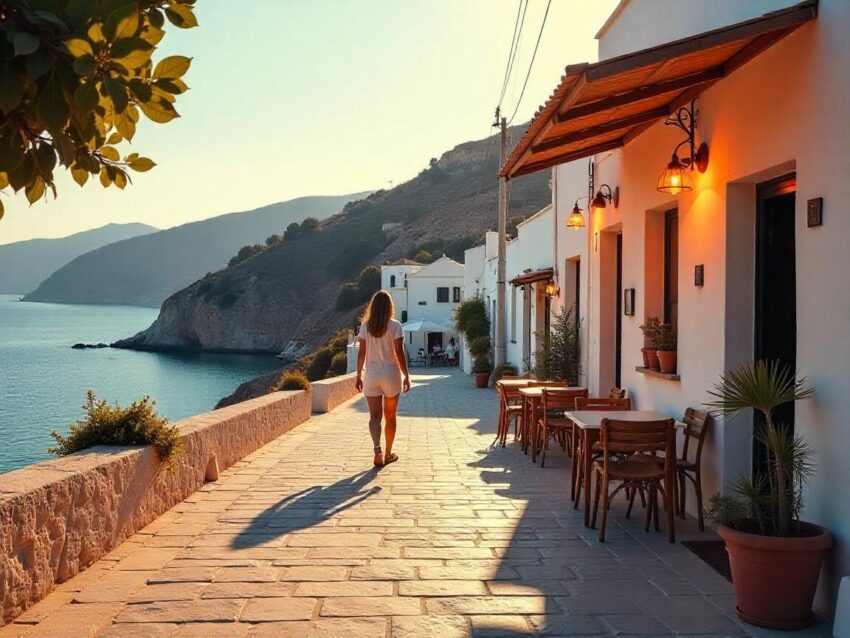
Nisyros (Dodecanese)
Nisyros is a volcanic island in the Dodecanese chain that feels like stepping into another dimension. What sets Nisyros apart is its still-active volcano, whose massive caldera dominates the island’s interior. Visitors can actually walk inside the crater of Stefanos, where the earth hisses and bubbles beneath their feet—a surreal, otherworldly experience. The main town, Mandraki, is postcard-perfect with its medieval castle, blue-shuttered homes, and peaceful harbor. Thermal springs in Loutra offer natural relaxation, while the small villages of Nikia and Emporios sit perched on mountain ledges with panoramic views and charming tavernas. The island’s untouched beaches, like Pachia Ammos and Lies, are perfect for solitude seekers. Nisyros is also rich in folklore, archaeological sites, and religious festivals that bring the local community together. With minimal tourist infrastructure, it offers an authentic Greek island escape—quiet, curious, and completely captivating.
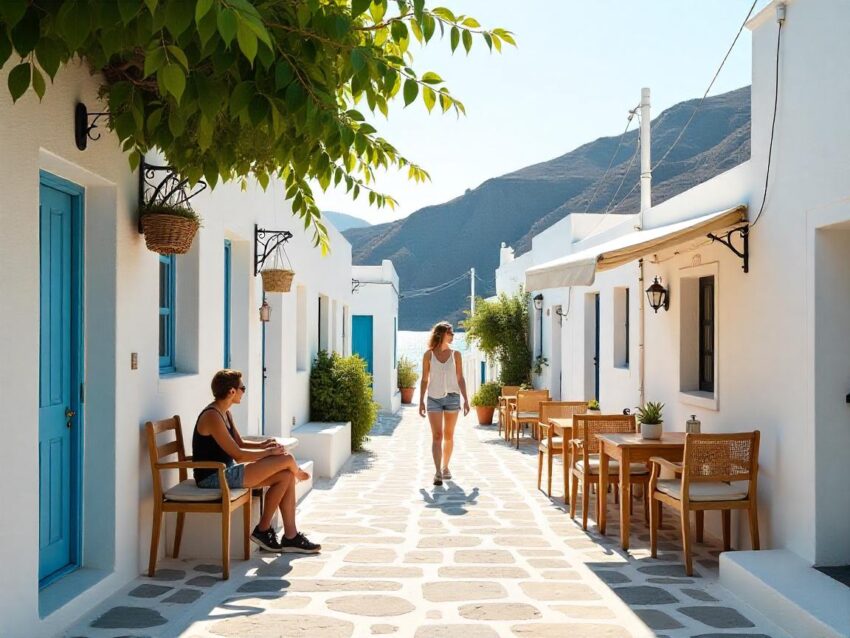
Karpathos (Dodecanese)
Karpathos is a rugged, mountainous island nestled between Crete and Rhodes. It has retained a strong cultural identity, especially in its northern village of Olympos, where locals still wear traditional dress and speak a unique dialect. The island is a paradise for outdoor lovers, offering excellent hiking trails, windsurfing spots, and secluded coves. Apella Beach, often ranked among Greece’s best, dazzles with turquoise waters framed by cliffs. The town of Pigadia provides a vibrant yet relaxed base with waterfront tavernas and archaeological sites like the ancient city of Potideon. The island’s terrain is ideal for trekking, especially the routes connecting Olympos with Diafani. Karpathos also celebrates numerous religious festivals throughout the year, allowing visitors to experience authentic island traditions. Quiet, genuine, and dramatic in scenery, Karpathos is where the Dodecanese’s soul remains intact.
Syros (Cyclades)
Unlike the whitewashed minimalism of most Cycladic islands, Syros surprises with its neoclassical grandeur and multicultural heritage. Ermoupoli, the capital of both the island and the Cyclades region, stuns with marble-paved streets, 19th-century mansions, and the majestic Apollo Theater—a miniature version of La Scala. The town is a cultural hub, with music festivals, art galleries, and museums like the Industrial Museum and the Archaeological Museum of Syros. On the hill of Ano Syros, narrow alleyways wind around Catholic churches and traditional cafes offering panoramic views. Syros has a laid-back beach scene, with family-friendly options like Galissas and Kini, and more secluded spots like Aetos. The island’s religious diversity, with Orthodox and Catholic communities coexisting for centuries, adds a unique cultural flavor. Syros blends sophistication with authenticity and is ideal for travelers seeking culture over clubbing.
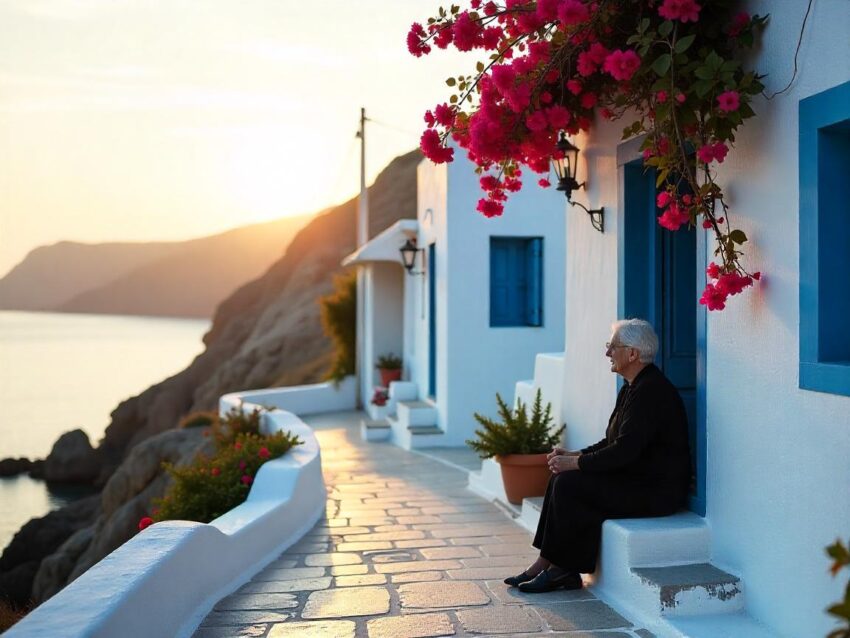
Samothraki (North Aegean)
Remote and mystical, Samothraki (or Samothrace) is one of Greece’s best-kept secrets for nature lovers and spiritual seekers. The island is dominated by Mount Saos, Greece’s second-highest mountain, which fuels countless waterfalls, rivers, and ancient forests. The Fonias Gorge is a hiker’s dream, filled with natural plunge pools and dense vegetation. Archaeology buffs are drawn to the Sanctuary of the Great Gods, one of the most enigmatic religious sites of antiquity and where the famed Winged Victory of Samothrace was discovered. The beaches—like Pachia Ammos—offer natural seclusion, while the thermal springs in Therma soothe tired muscles after long treks. The island maintains a bohemian, eco-conscious atmosphere, with many visitors camping or staying in small guesthouses. Samothraki is for those who crave raw nature, mythological intrigue, and a break from commercialized tourism.
Kythira (Ionian Islands)
Although officially part of the Ionian Islands, Kythira lies off the southeastern Peloponnese coast and is a world away from mass tourism. The island offers a mix of rugged coastlines, waterfalls, Byzantine churches, and historic castles. Chora, the capital, charms with Venetian architecture and a castle overlooking the sea. Nearby, the beach of Kapsali offers clear waters and a vibrant seaside strip. In the north, the village of Mylopotamos is home to the enchanting Neraida waterfall and a series of abandoned watermills. Kythira also hosts cave chapels and the imposing Avlemonas bay with turquoise waters and traditional tavernas. Mythologically linked to Aphrodite, the island retains a romantic aura. It’s ideal for slow travel, rich with authentic tavernas, untamed nature, and minimal crowds.
Nafpaktos (Mainland)
Nafpaktos is a coastal jewel on the Gulf of Corinth, combining natural beauty with deep historical roots. Its picturesque Venetian harbor is flanked by two fortified towers and leads to a lively waterfront filled with cafes and tavernas. Above the town, the well-preserved Venetian Castle offers panoramic views of the sea and surrounding mountains. Nafpaktos is perfect for history lovers, with monuments linked to the Battle of Lepanto and the Byzantine Chapel of Saint Paraskevi. The town is also a gateway to adventure: mountain biking, paragliding, and hiking in the surrounding Pindus Mountains. Psani and Gribovo are its main beaches—clean, accessible, and shaded by plane trees. Less hectic than other mainland hotspots, Nafpaktos offers an intimate look at authentic Greek life with the bonus of both beach and mountain experiences.
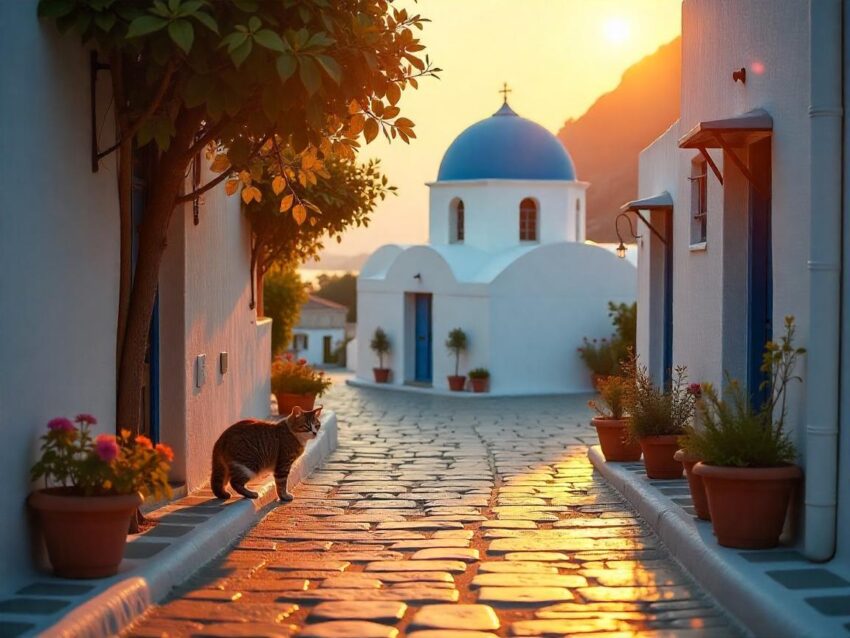
Prespa Lakes (Northern Greece)
Tucked away in the tri-border region of Greece, Albania, and North Macedonia, the Prespa Lakes offer a serene escape for nature lovers and birdwatchers. The area comprises two lakes—Mikri (Small) and Megali (Great) Prespa—home to over 260 species of birds, including rare Dalmatian pelicans and herons. The lakes are part of a protected National Park with trails, observation posts, and tranquil villages. The island of Agios Achilleios, accessible by a floating bridge, houses Byzantine ruins and ancient churches. Fishing villages like Psarades and Agios Germanos offer a glimpse into traditional Macedonian Greek life. Eco-tourism thrives here, with kayaking, cycling, and farm-to-table experiences gaining popularity. Prespa remains largely untouched by mass tourism, offering unspoiled nature, spiritual quietude, and rich cross-border cultural history.
Folegandros (Cyclades)
Folegandros, close to Santorini yet blessedly untouched, is a cliffside sanctuary for travelers craving beauty without the bustle. The Chora, perched high above the sea, is among the most charming villages in the Aegean, with cobbled lanes, bougainvillea-covered balconies, and atmospheric squares. The cliffside church of Panagia offers breathtaking views at sunset. The island’s beaches—like Agali, Livadaki, and Katergo—are often reached by hiking or boat, adding to the sense of discovery. Folegandros is also known for its gastronomic charm, with small tavernas serving local dishes like matsata pasta. Quiet yet dramatic, the island appeals to artists, honeymooners, and solo travelers alike. It offers emotional solitude, photogenic landscapes, and a sense of timelessness hard to find elsewhere.
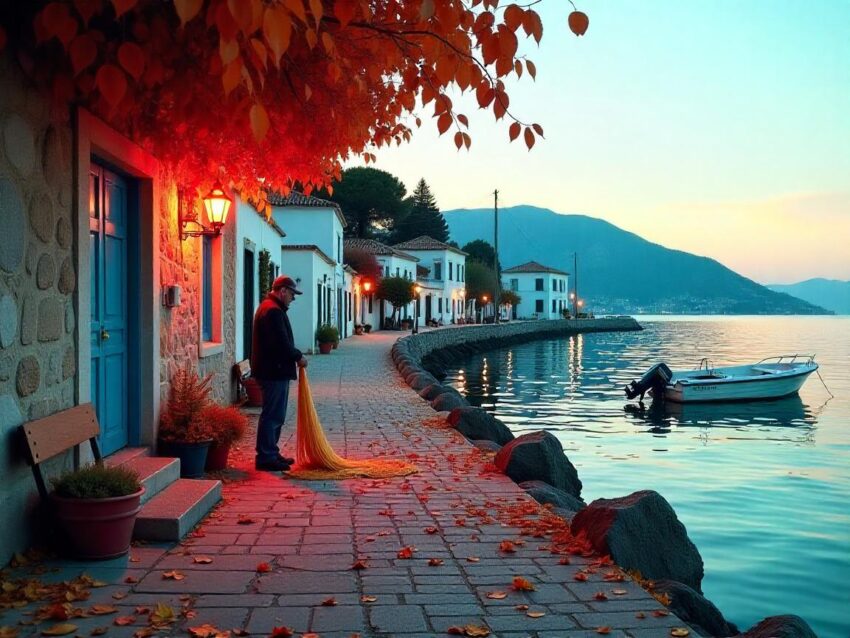
Meteora (Mainland, Thessaly)
Meteora is one of Greece’s most awe-inspiring landscapes, where ancient monasteries seem to float atop towering stone pinnacles. A UNESCO World Heritage Site, Meteora hosts six active monasteries open to visitors, each offering a glimpse into centuries of ascetic life, religious art, and spiritual dedication. The monasteries are accessible via carved stairways and offer sweeping views of the Thessalian Plain. The nearby town of Kalambaka serves as a convenient base, with accommodations, tavernas, and local craft shops. Meteora is also a hotspot for rock climbing, hiking, and photography. Sunset viewpoints draw global travelers, yet the atmosphere remains peaceful, especially in the shoulder seasons. Combining natural wonder with spiritual depth, Meteora stands as a testament to human resilience and divine inspiration.
These destinations are gaining popularity not just among Europeans, but increasingly among North and South Americans. The reason is clear: travelers want depth, not density.
ETIAS Will Soon Reshape Entry Requirements
While the visa-free era is still in full swing, a major policy change is coming. Beginning in late 2026, travelers from visa-exempt countries will need to register for ETIAS—the European Travel Information and Authorisation System—before entering Greece or any other Schengen Area country.
ETIAS is not a visa. It’s an electronic travel authorization similar to the US ESTA system. The application will cost €7 and be valid for three years or until passport expiry. Although the process will be quick and digital, failure to obtain it in advance will result in denied boarding.
Travelers from the US, Canada, Argentina, Brazil, Chile, Mexico, and Costa Rica—all of whom currently enjoy visa-free access—will be among those required to apply.
Now is the time to take advantage of simplified entry procedures. Once ETIAS is active, the extra step—however minor—will be mandatory.
Greece Diversifies Beyond EU Dependency
Tourism numbers show a clear trend: Greece is diversifying. Germany, the UK, and Italy continue to lead in arrival numbers, but a stronger presence from the Americas is creating a more balanced inbound travel economy.
This shift is important. EU dependency, while financially beneficial, exposes countries like Greece to regional economic swings. Broader international interest supports long-term resilience. With targeted marketing and improved air routes, Greece is extending its appeal well beyond its traditional base.
Infrastructure and Sustainability Challenges Ahead
Success comes with strain. Infrastructure in high-traffic areas is showing signs of fatigue. Roads, waste systems, and local housing markets are all feeling the weight of tourism demand. In response, the Greek government has introduced several key measures:
- New taxes and limits on cruise ship arrivals
- Tighter regulations on short-term rentals in over-touristed areas
- Incentives to encourage travel to less-populated regions
These initiatives aim to ensure that growth remains sustainable. Local communities are increasingly vocal about the need for balance, and authorities are responding.
What This Means for Travelers Now
For anyone considering a trip to Greece in 2025, the message is clear: go now, plan smart, and explore beyond the usual. The opportunity to visit without a visa remains open. The experience will be authentic, diverse, and rich in value.
Keep your passport valid for at least six months, observe the 90/180-day Schengen rule, and stay updated on ETIAS requirements if your trip will happen after 2026.
For travelers from the Americas, now is an ideal time. Direct flights, strong currency exchange rates, and Greece’s open-door visa policy create a golden window for travel.
The Takeaway
Greece has entered a transformative phase in global tourism. With record-setting arrivals, massive economic impact, and hidden destinations stepping into the spotlight, the country is redefining what travel looks like in a post-pandemic world.
But this boom won’t remain frictionless. Policy changes are already on the way. Travelers who move now can benefit from the freedom, affordability, and authenticity Greece currently offers—before new regulations slow the flow.
The clock is ticking. Greece is calling. And for millions of travelers, 2025 may be the perfect moment to answer.
Tags: athens, Canadian travelers to Greece, ETIAS 2026, Folegandros, greece, hidden destinations Greece, Karpathos, Kythira, Latin American tourists, Mediterranean travel boom, Meteora, Nafpaktos, Prespa Lakes, Samothraki, sustainable tourism, Syros, Thessaloniki, Tinos, tourism Greece 2025, travel policy Greece, US travelers to Greece, visa-free Greece






